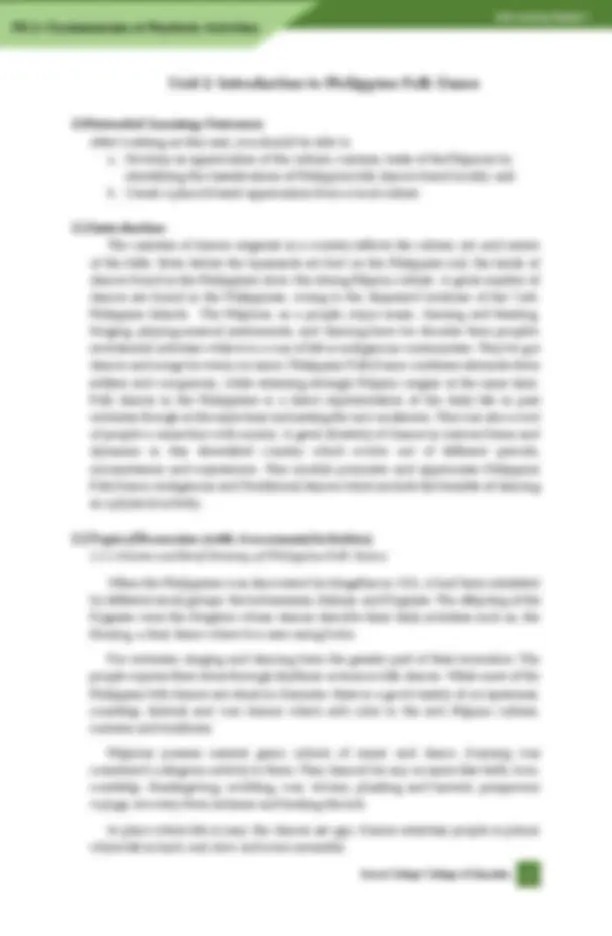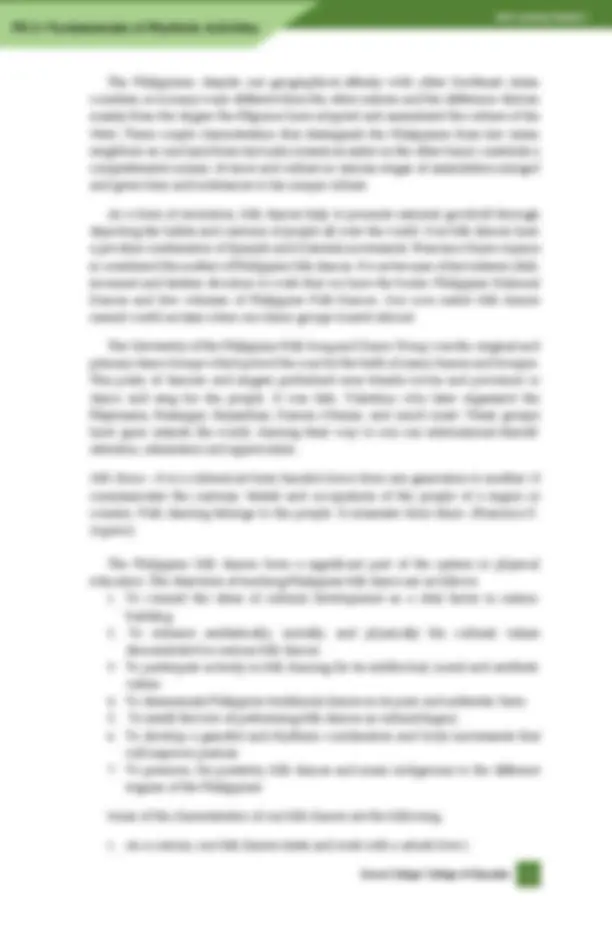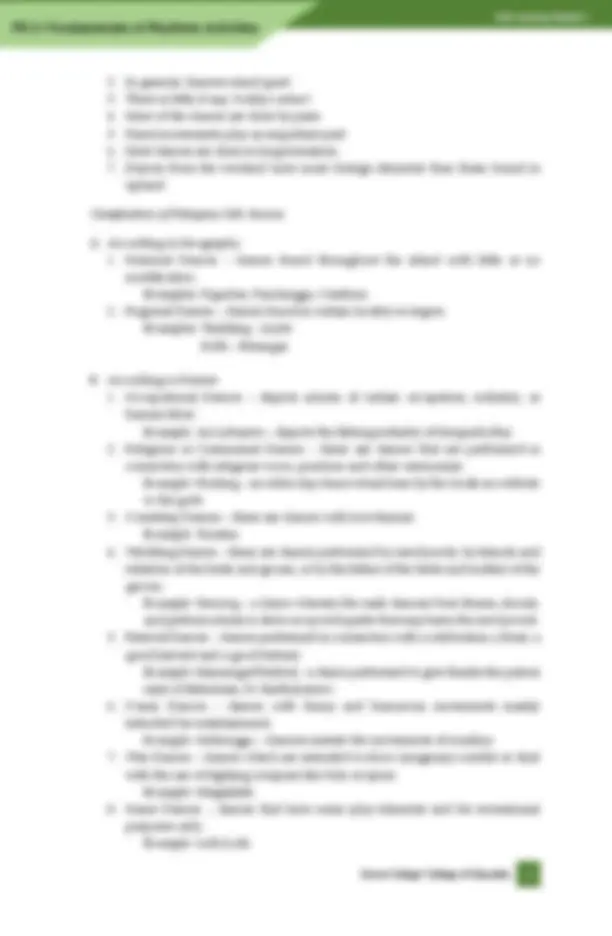






Study with the several resources on Docsity

Earn points by helping other students or get them with a premium plan


Prepare for your exams
Study with the several resources on Docsity

Earn points to download
Earn points by helping other students or get them with a premium plan
Community
Ask the community for help and clear up your study doubts
Discover the best universities in your country according to Docsity users
Free resources
Download our free guides on studying techniques, anxiety management strategies, and thesis advice from Docsity tutors
A self-learning module for the course PE 2: Fundamentals of Rhythmic Activities at Samar College. The course aims to enhance the skills and knowledge of students in dance by providing dance terms, basic steps, patterns, and illustrations. The document covers the classification of Philippine folk dances according to geography, nature, movements, and formation. It also includes references and acknowledgments. The document ends with an activity for students to provide examples of Philippine folk dances found specifically in the islands of Samar.
Typology: Assignments
1 / 8

This page cannot be seen from the preview
Don't miss anything!





2021 - 2022 2 nd^ Semester
PE 2 l Fundamentals of Rhythmic Activities Course Description This is a two (2) unit course which adheres to synthesize, reinforce, and provide the concepts, and about Rhythmic Activities and Rhythmic fundamentals. This aim to enhance the skills and knowledge of the students in dance. This course will provide dance terms, basic steps, patterns and illustrations to develop the holistic ability of the students.
PE 2: Fundamentals of Rhythmic Activities
PE 2 l Fundamentals of Rhythmic Activities The Philippines, despite our geographical affinity with other Southeast Asian countries, is in many ways different from the other nations and the difference derives mainly from the degree the Filipinos have adopted and assimilated the culture of the West. These couple characteristics that distinguish the Philippines from her Asian neighbors on one hand from her Latin American sister on the other hand, constitute a comprehensive mosaic of races and culture in various stages of assimilation merged and gives form and substances to his unique culture. As a form of recreation, folk dances help to promote national goodwill through depicting the habits and customs of people all over the world. Our folk dances have a peculiar combination of Spanish and Oriental movements. Francisca Reyes Aquino is considered the mother of Philippine folk dances. It was because of her interest, skill, incessant and tireless devotion to work that we have the books: Philippine National Dances and five volumes of Philippine Folk Dances. Our own native folk dances earned world acclaim when our dance groups toured abroad. The University of the Philippine Folk Song and Dance Troup was the original and primary dance troupe which paved the way for the birth of many dances and troupes. This party of dancers and singers performed near Manila towns and provinces to dance and sing for the people. It was Mrs. Tolentino who later organized the Filipiniana, Barangay, Bayanihan, Ramon Obusan, and much more. These groups have gone outside the world, dancing their way to win our international friends' attention, admiration and appreciation. Folk Dance – It is a cultural art form handed down from one generation to another. It communicates the customs, beliefs and occupations of the people of a region or country. Folk dancing belongs to the people. It emanates from them. (Francisca R. Aquino) The Philippine folk dances form a significant part of the system in physical education. The objectives of teaching Philippine folk dance are as follows:
PE 2 l Fundamentals of Rhythmic Activities
PE 2 l Fundamentals of Rhythmic Activities Name: Course/Year/Sec: Subject Title: Subject Code: Directions: Give one example for each classification of Philippine folk dance under “According to Nature” which can be found specifically in the islands of Samar. Provide a photo and a brief description of each dance selected. You may use a separate sheet of paper for your answers. Unit 2: Activity 1
PE 2 l Fundamentals of Rhythmic Activities Name: Course/Year/Sec: Subject Title: Subject Code: Directions: Create a localized reflection paper and attach documentation. a. Seek and read more of your community’s history that relates to Philippine folk dances (i.e., if you’re from Catbalogan City, you can read more about the “An Labasero” folk dance where it originated and share the details and reflect on your paper. On the other hand, if your community does not have any related history of the topic, you can use the festival dance within your town/municipality. b. Read rubrics below for assessing your reflection paper. Unit 2: Activity 2